8 Common Signs of a Bad Rhinoplasty
As the central feature on the face, the nose has a profound impact on your appearance overall. Rhinoplasty is a plastic surgery procedure that can reshape and resize the nose to create facial harmony. When performed by a highly trained, board-certified plastic surgeon, rhinoplasty can provide seamless alterations and coveted results. However, it is also a delicate process that can go less than perfect at times, sometimes requiring a revision surgery to produce a better result.
Signs of a bad nose job
A bad nose job can lead to cosmetic and functional problems, and the need for revision rhinoplasty. Wondering if you’ve experienced a bad rhinoplasty? Here are the most common signs of a bad nose job:
1. Bridge is Too Low (Scooped Profile)
A low bridge can occur when a surgeon uses a chisel or osteotome. This tool requires precision and can effectively remove a portion of the bridge in one movement. Sometimes that movement is in the wrong place, or the tool can remove too much tissue or cartilage, creating a bridge that is too low. From the side, it can look like a scooped profile. In some cases, the chisel can cause severe damage and weaken the nasal structure, leading to a collapsed nose.
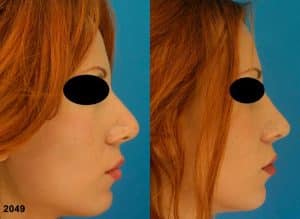
2. Nose Looks Pinched (also pinched nostrils)
After a rhinoplasty procedure, the nose or nostrils can look pinched, making the nose look long and slender. Not only can this bad nose job look unsightly, but it can also result in difficulty breathing due to a narrow passageway that does not allow enough airflow. This common sign of a botched rhinoplasty can result from removing too much internal nostril tissue, resulting in slits for nostrils rather than round holes. It is important to correct this mistake for adequate breathing.
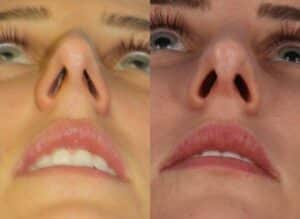
3. Nose Turns Up Too Much
When a rhinoplasty aims to shorten the nose, it can lead to many common side effects that rotate the tip upward too much or leave the tip at an irregular angle. Large amounts of removed tissue from the septum is a poor attempt to raise the nose and a sign of a bad nose job. A nose that is turned up too much can look like a pig snout. This effect is also common due to swelling after surgery but swelling-related issues should dissipate in several weeks. If the nose tip does not drop during the recovery process, revision surgery may be necessary.
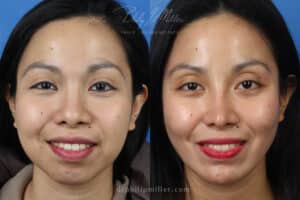
4. Nose Has Pollybeak Deformity
Pollybeak deformity is when the area above the tip is too full and makes the nose protrude downward, looking like a bird beak. This can occur from unpredictable healing but is most often due to a bad nose job. Sometimes not enough cartilage is removed, and the excess tissue in the supratip area can force the nose shape downward. In addition to the cosmetic concern, this mistake can also result in difficulty breathing from one or both nostrils. Pollybeak deformity can also occur due to aggressive removal of a dorsal hump without considering reshaping the area and remaining tissue.
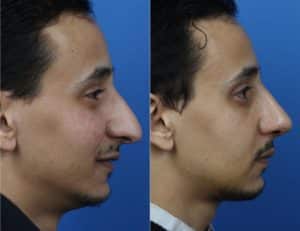
5. Nasal Tip is Same Width as Bridge
In a typical nose shape, the tip should be slightly wider than the bridge for an appealing and cohesive form. A bad rhinoplasty procedure overlooks this knowledge when reshaping and sizing problem areas. When the nasal tip and bridge are the same width, the nose can look unnatural.
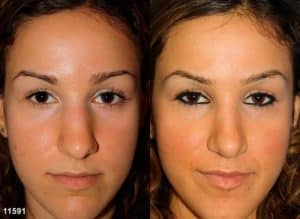
6. Nostrils are Too Wide or Asymmetrical
As a prominent feature, any mistake on the nose is highly noticeable. Disproportionate or asymmetrical nostrils are a common sign of a bad nose job and can be easily prevented with exceptional skill and a strong sense of aesthetics.
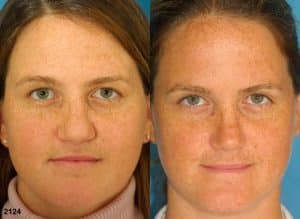
7. Nose is Not Proportionate to Other Facial Features
The main goal of rhinoplasty is to create facial balance and an aesthetically pleasing nose shape and size that flows seamlessly with other features. When a nose job is poorly executed, it can look like your nose does not belong with your other features. Rhinoplasty must be a personalized procedure to ensure proper proportion and flow.
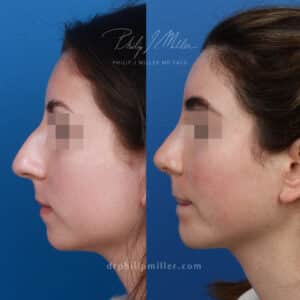
8. You Notice Breathing Difficulty
A cosmetic nose job should not impact the function of the nose. Difficulty breathing is a sure sign of a bad nose job. This error is more common with reductive procedures as too much tissue or cartilage is removed, reducing the internal and external passageway for poor airflow.
Revision rhinoplasty surgeon in New York
If you had a bad rhinoplasty procedure, you may be a candidate for revision rhinoplasty. Revision procedures are often more complex than the initial nose job, so it is critical to choose an experienced, skilled surgeon to perform your procedure and ensure a better outcome.
About Dr. Miller in NYC
Philip J. Miller, MD, FACS, is a double-board certified facial plastic surgeon specializing in cosmetic facial procedures that help patients achieve their aesthetic goals. Dr. Miller is a leading expert in rhinoplasty and facial rejuvenation, focusing on comprehensive treatment plans for natural results. He uses the NatraLook® process, which empowers patients to explore their aesthetic beauty and provides a supportive space to discuss a unified vision.
Contact us to schedule a consultation at our New York or New Orleans office and learn more about rhinoplasty and revision rhinoplasty.
8 Nose Imperfections People Correct with Rhinoplasty
No one’s face is perfect, but some people may have noses that can be a significant source of self-consciousness and low self-esteem. Nose surgery, also called rhinoplasty, can be performed on the nose to correct nasal imperfections and asymmetry.
Nose imperfections are common, which is why rhinoplasty procedures are one of the most popular cosmetic surgeries in the world. Take a look at these eight nose imperfections that can be corrected with rhinoplasty:
Dorsal Hump
A dorsal hump is a cartilage or bone irregularity on the nose that causes a hump in the outline instead of a seamless slope from the bridge to the tip. They do not cause health problems but can lead to dissatisfaction with one’s appearance. The dorsum bone and cartilage connect the nose to the face and is often called the bridge. Rhinoplasty can remove the hump to produce a more aesthetically-pleasing facial profile.
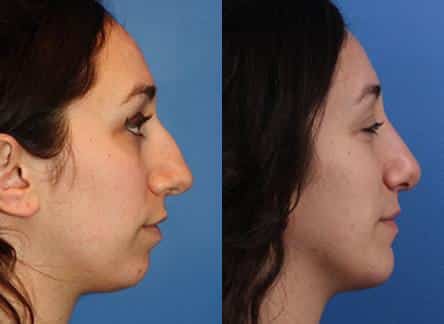
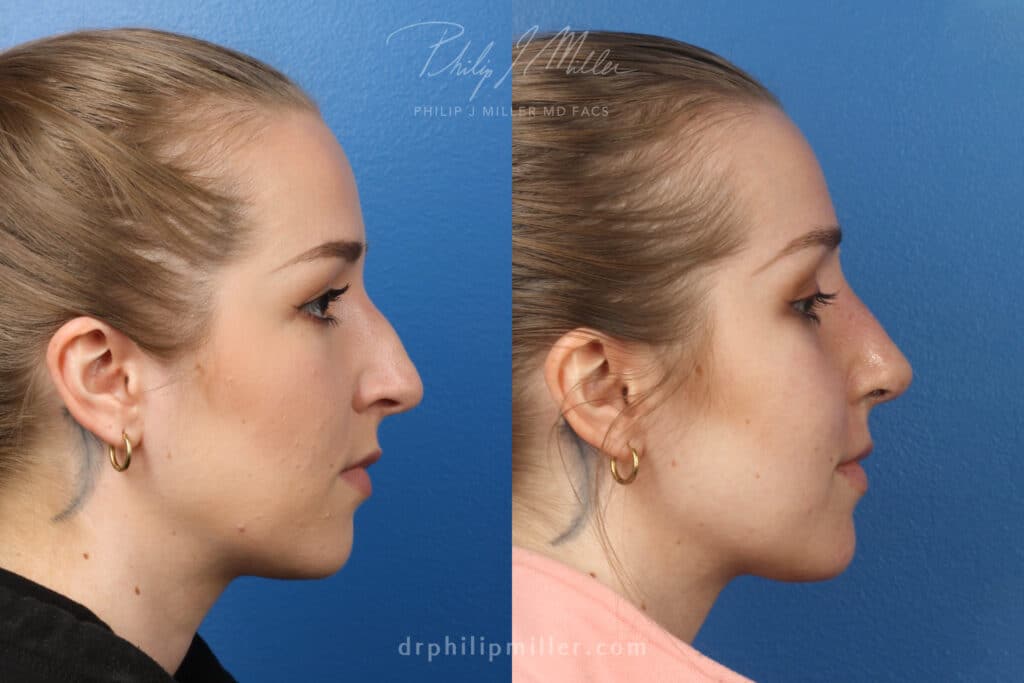
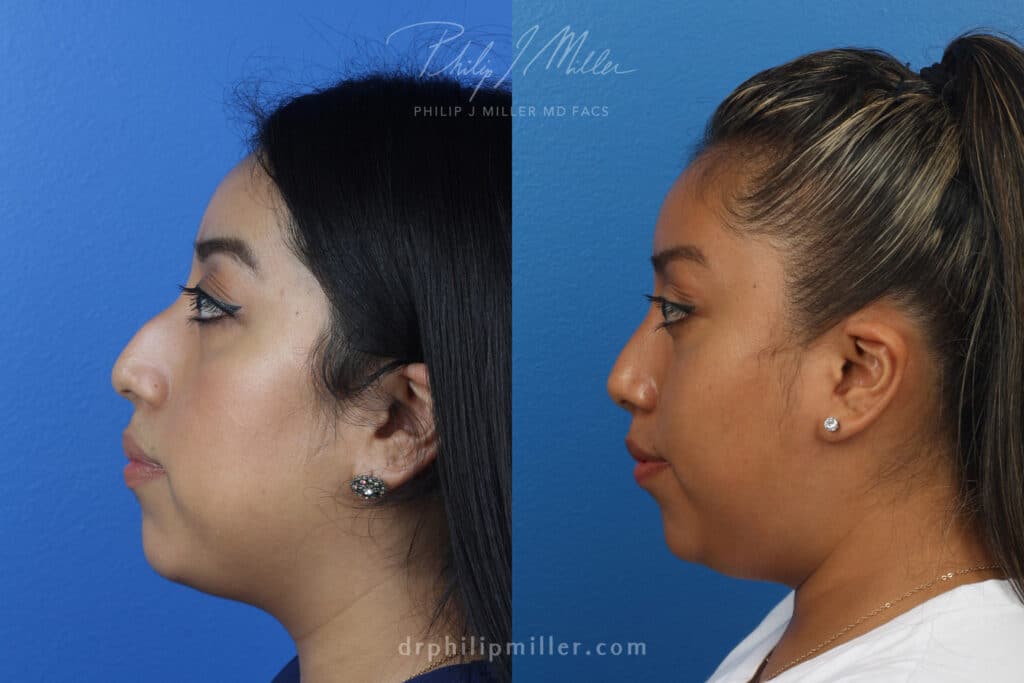
Philip J. Miller, MD, FACS, can also use his microrhinoplasty technique to correct unsightly humps without fracturing bones or using other more invasive approaches. It is an innovative procedure that utilizes an air-powered microrasp with local anesthesia. Using a small incision in the nostril, the specialized device removed the obtrusive layer with extreme precision for a contoured look. Patients experience minimal side effects like swelling and bruising and can return to normal activities within several days.
Wide Nose Bridge
The bridge of the nose extends from the top of the nose, below the eyes, to the tip of the nose and is used to help direct airflow to the nasal passages. In addition to its functional role, the nasal bridge is also considered an important feature of the face that can add to a person’s overall facial appearance and balance.
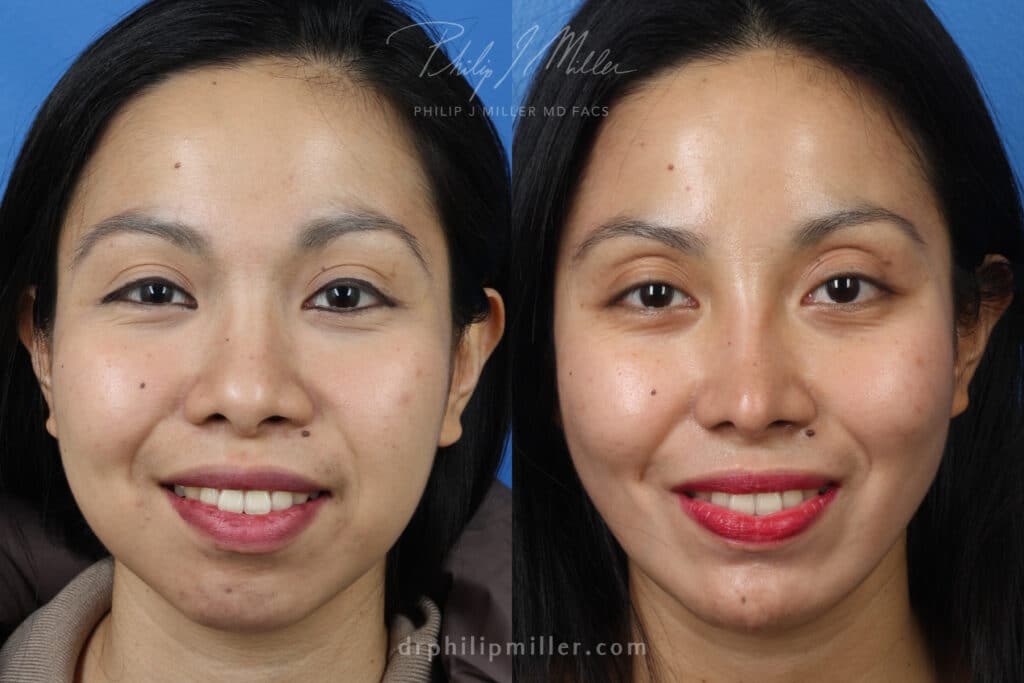
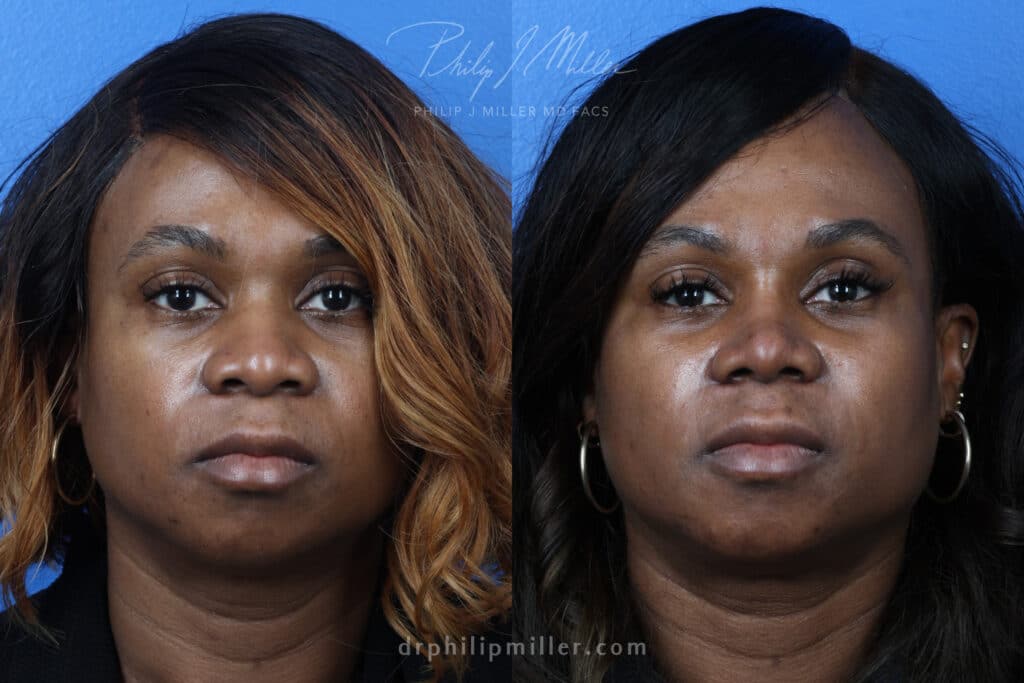
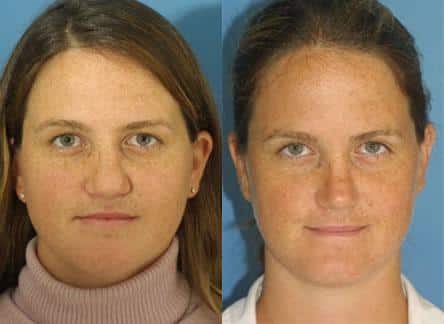
A wide nasal bridge is often common among many Asian, African, and Hispanic ethnicities. It is important to work with a board-certified facial plastic surgeon with experience in ethnic rhinoplasty procedures to ensure beautiful natural results that do not compromise your heritage in these situations. A wide nose bridge can be corrected with a specific technique during a rhinoplasty called an osteotomy, which narrows down a wide nasal bone for a more proportionate look.
Low Nasal Bridge
A low nasal bridge occurs when the bridge is flat and doesn’t protrude. It is a common characteristic among many ethnicities, such as Asian and African patients. A low nasal bridge doesn’t typically cause breathing problems but can be a cosmetic concern. The nasal bridge can be reshaped with a rhinoplasty to create a straighter profile and a more harmonious face shape.
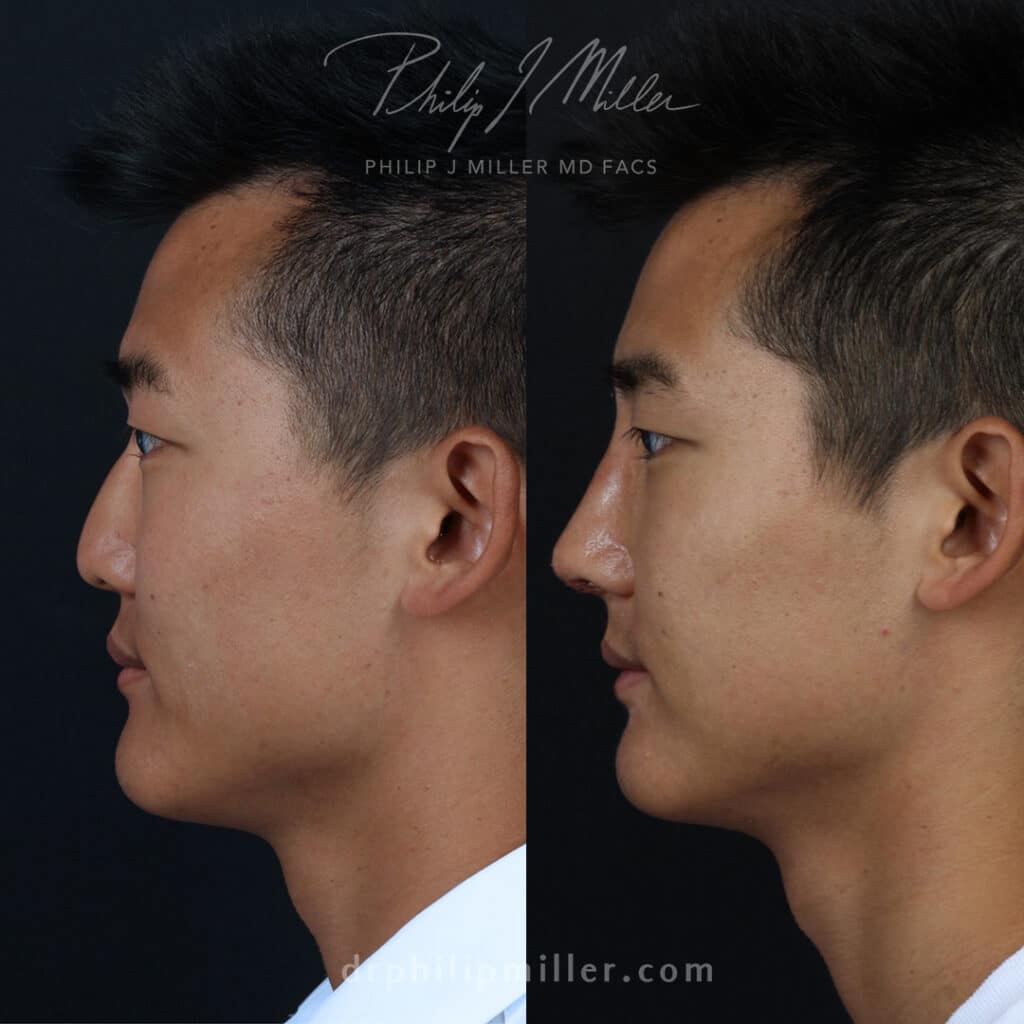
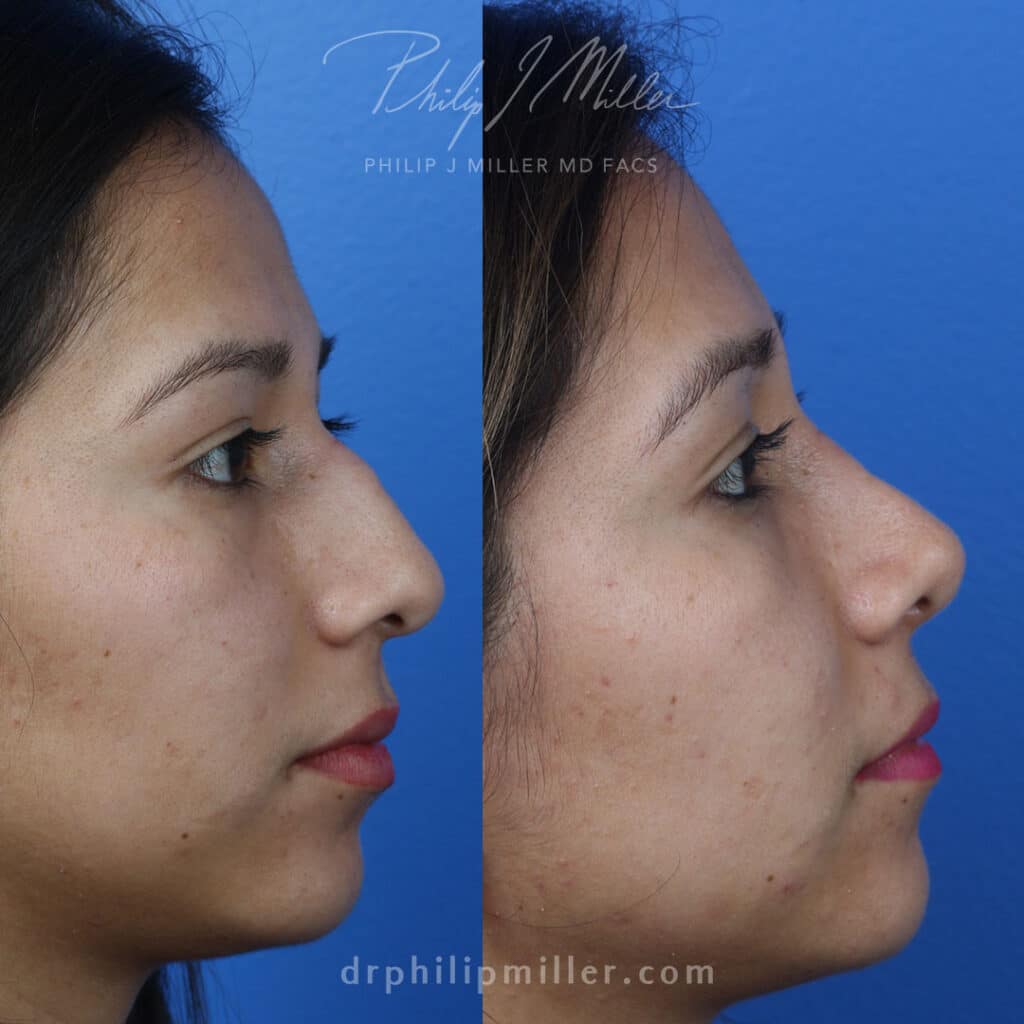
Bulbous Tip
A bulbous tip is wide and round and can also be called a ball tip nose. The bulb-like shape of the nasal tip is typically due to excess cartilage or cartilage without definition. A bulbous tip can also be due to thick nasal tip skin, which is often seen in ethnic noses. During nose tip surgery, the edges of the cartilage are trimmed to create a more refined nasal tip.
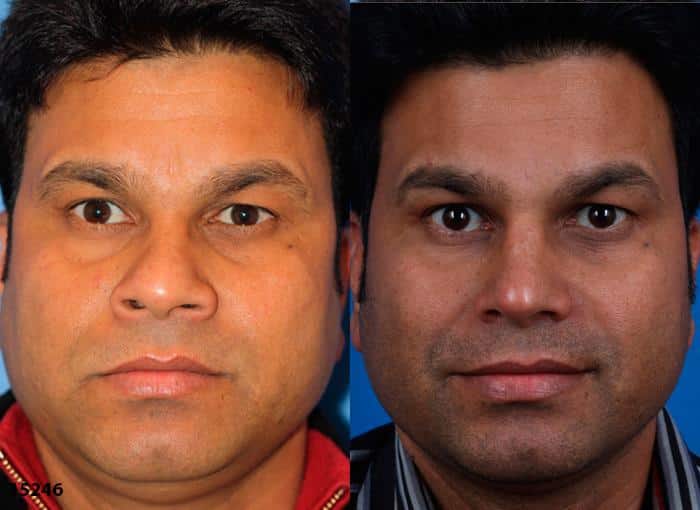
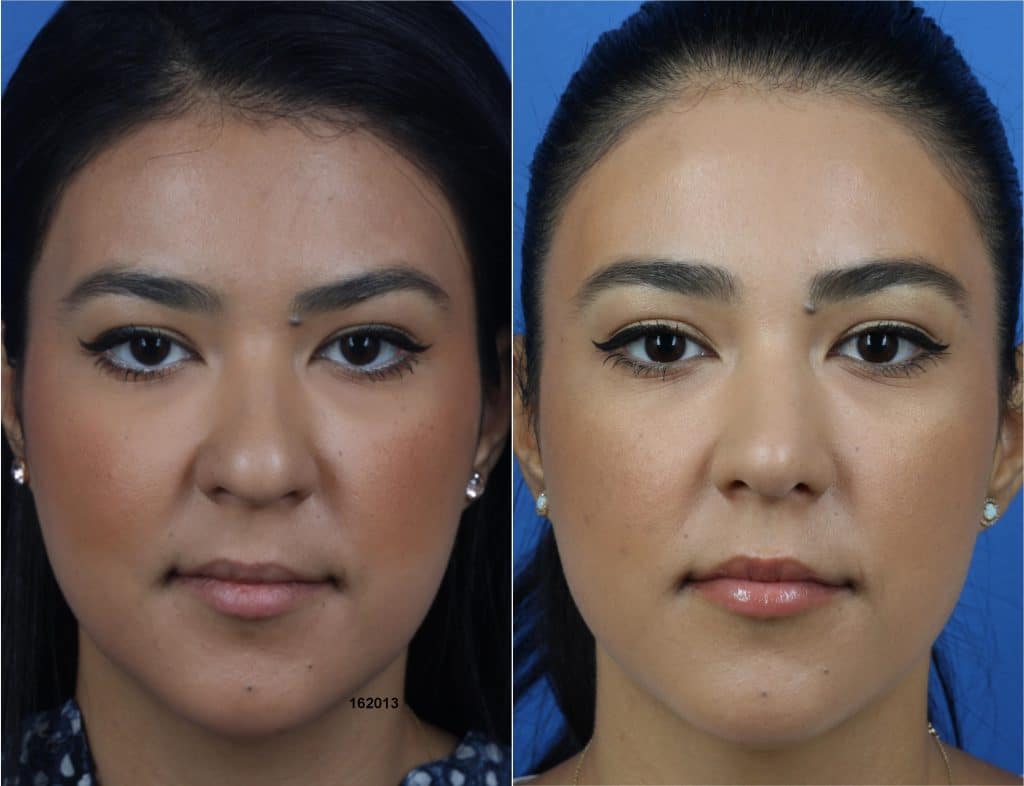
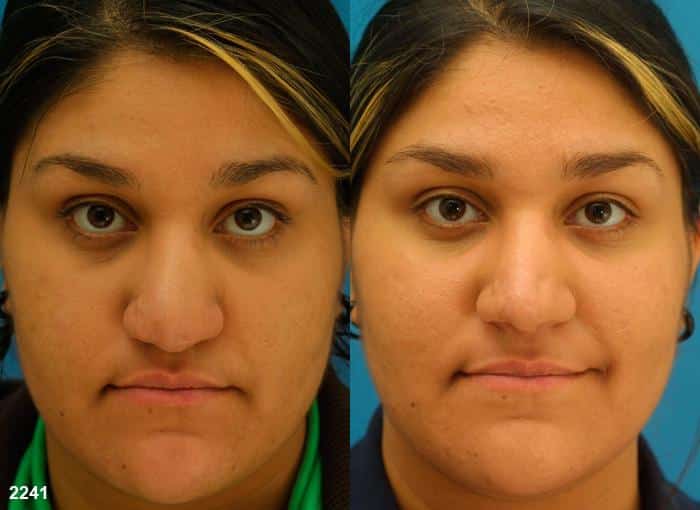
Drooping Nose Tip
A drooping nose tip is characterized by a downward slope that can sometimes result in an unnatural appearance, nasal blockage, and breathing issues. The drooping tip can form due to excess cartilage around the nose, aging, and skin laxity. Rhinoplasty is a permanent solution that can remove excess cartilage and provide support for the nasal tip, lifting and refining the nose for a more pleasing profile.
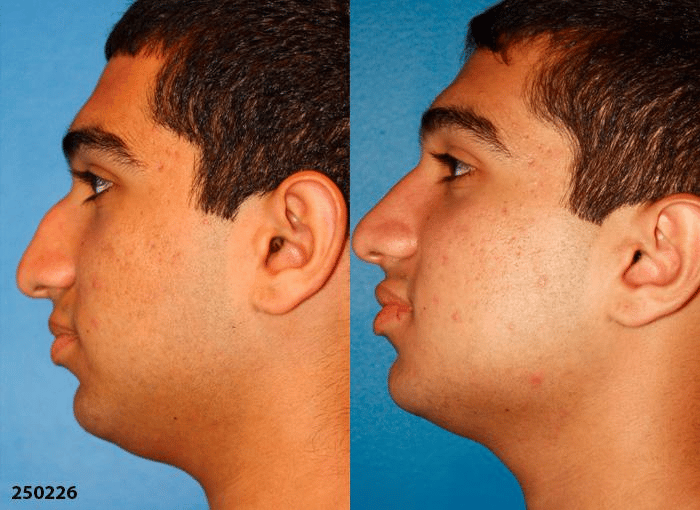
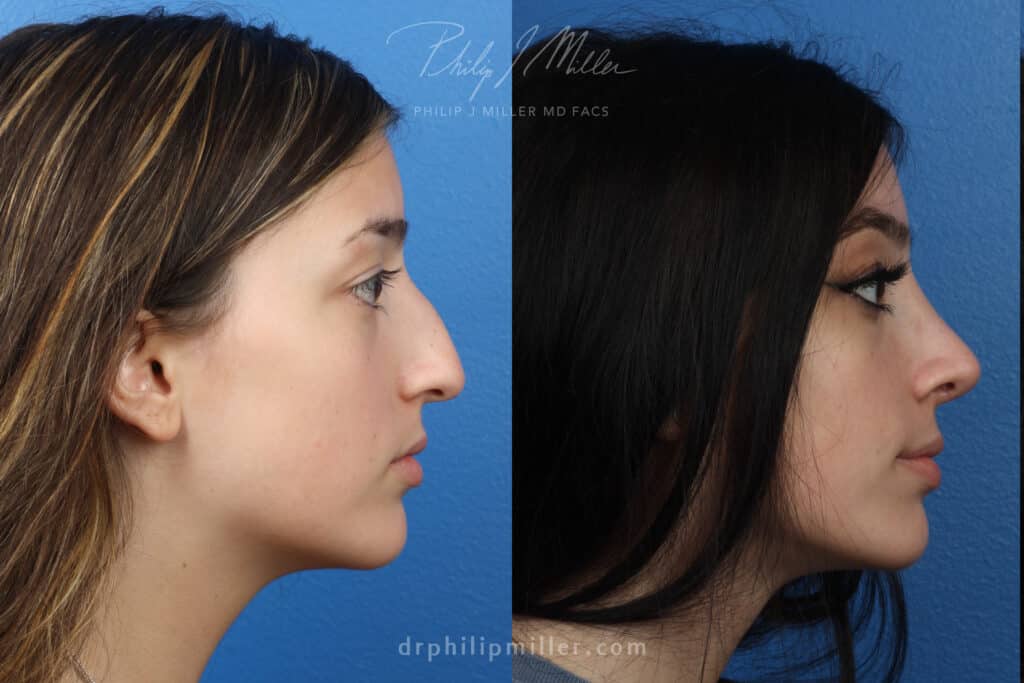
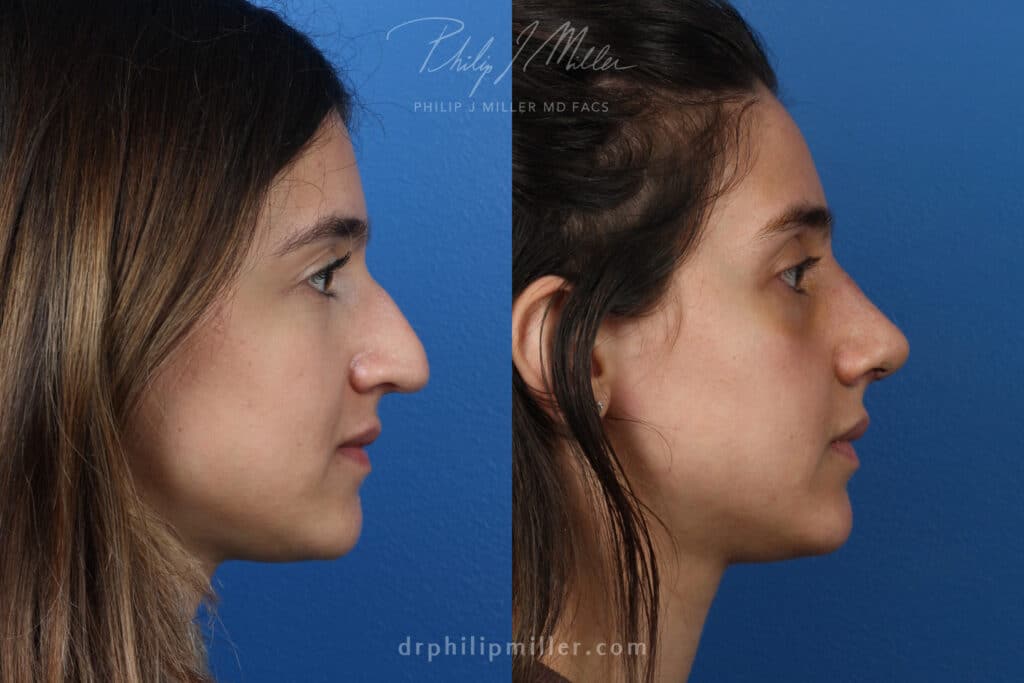
Droopy Nose when Smiling
Many patients have concerns about a droopy nose when they smile. A droopy nose when smiling can form from a weak structural base and droopy tip. The muscles around the nose move to make the tip appear droopy with wide nostrils making the problems more exaggerated during the facial expression. An expert surgeon can correct this concern and in some cases, temporary non-surgical treatments like Botox injections can also improve the droopiness.
Wide Nasal Base
A wide nasal base features a broad spread at the base of the nose, which can include enlarged nostrils that are disproportionate to the rest of the nose. In this case, a nose reduction procedure known as alar reduction can focus on narrowing the base of the nose by making the nostrils smaller, removing excess cartilage, and refining the nasal tip. Some ethnicities naturally have a wider nasal base that can be corrected by a facial plastic surgeon with expertise in ethnic rhinoplasty techniques.
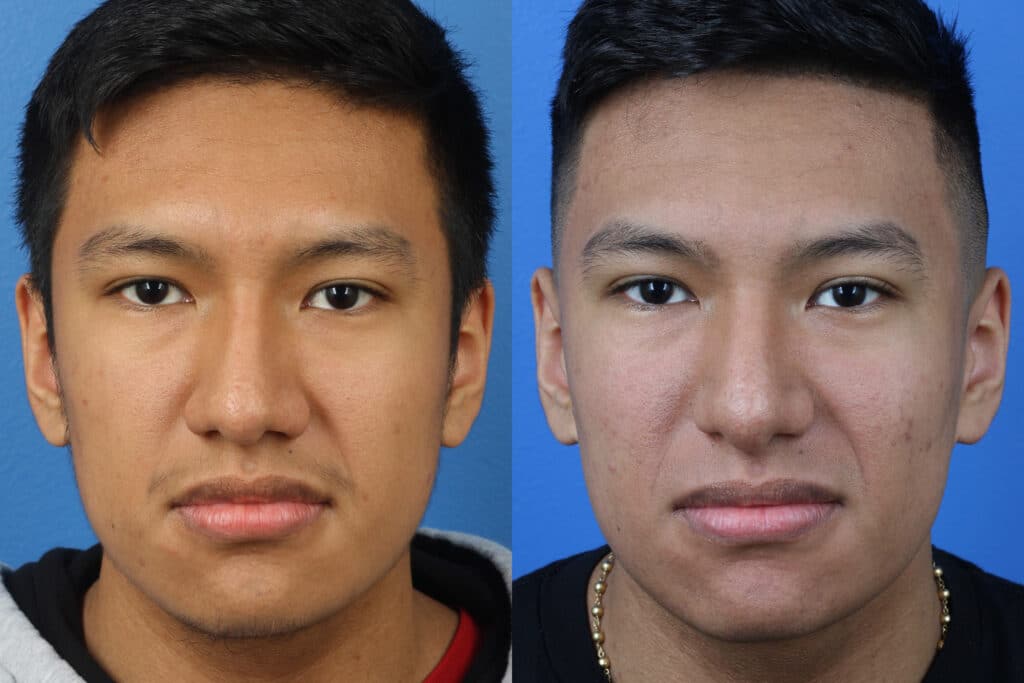
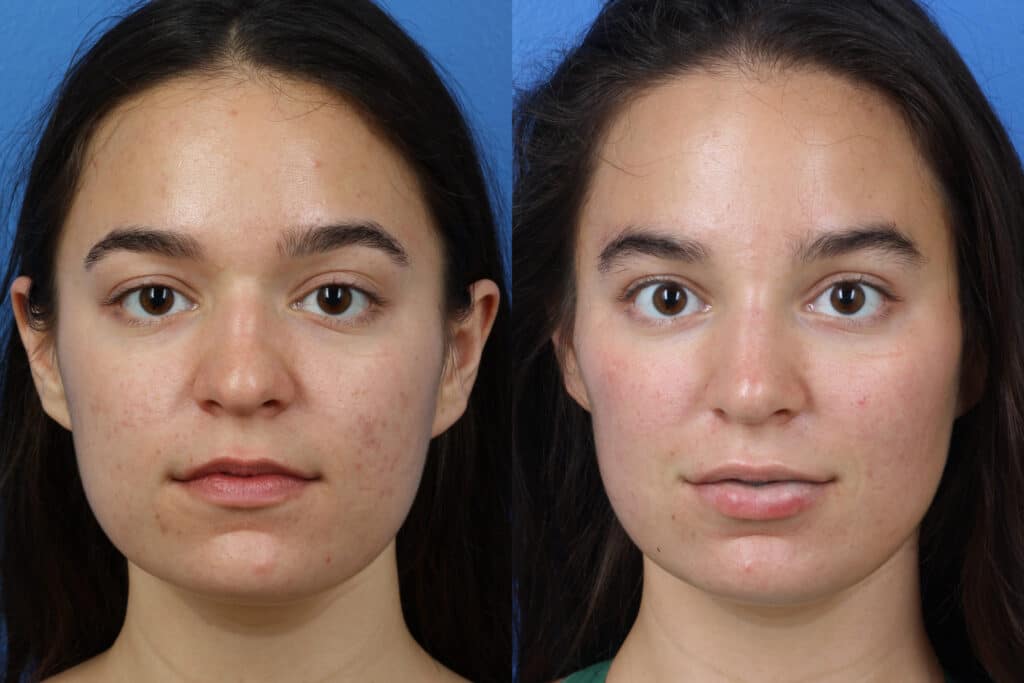
Hanging Columella
The columella is the tissue that separates the nostrils at the base of the nose. A hanging columella occurs when the connective structure drops lower than the base of the nose so it can be seen in the profile. Some patients are born with this feature, while others can have a long septum that pushes the columella downward. A hanging columella can be corrected with a rhinoplasty procedure and can be altered without reshaping any other portion of the nose.
Learn more about rhinoplasty here.
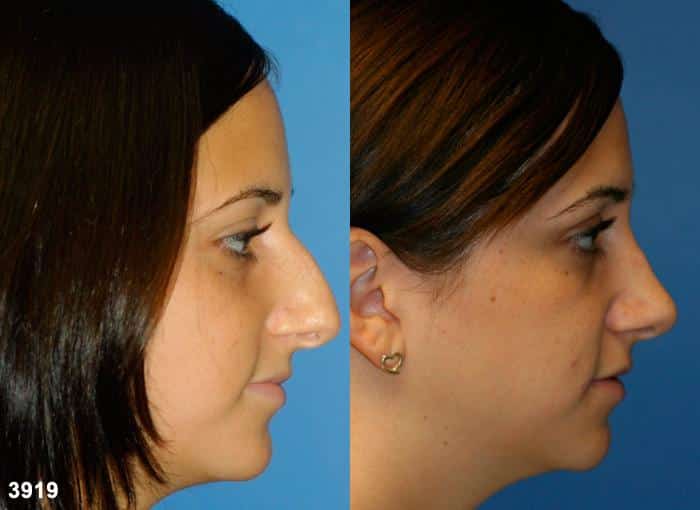
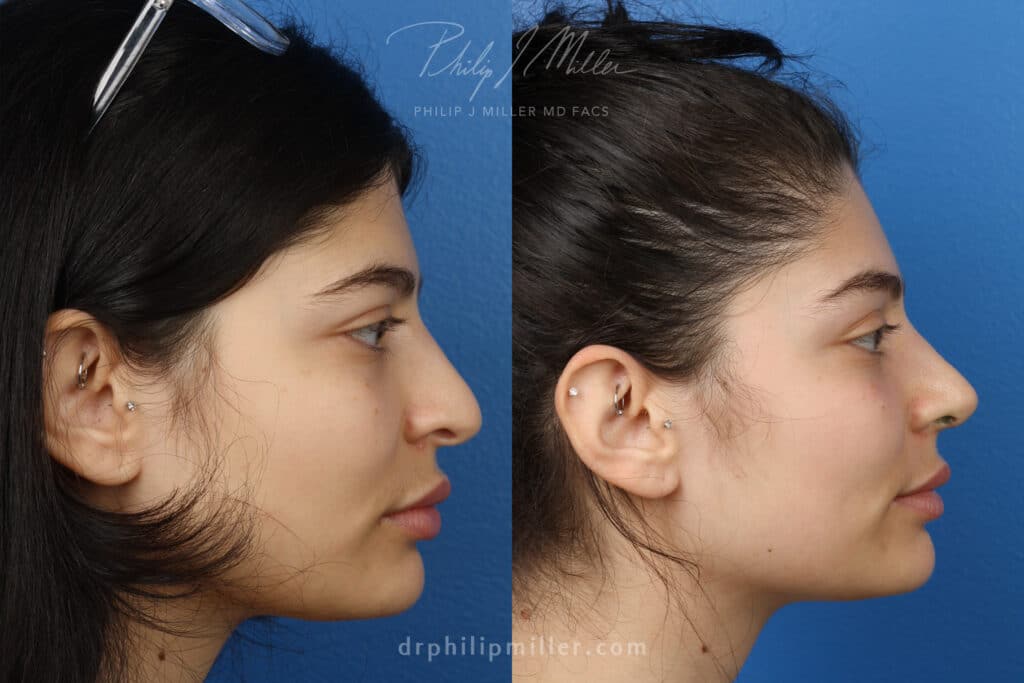
Concerns with Your Nose? Dr. Miller can Help
Dr. Philip Miller is a double board-certified facial plastic surgeon with more than two decades of experience in facial procedures including rhinoplasty. He provides a supportive environment for patients to explore their aesthetic beauty with his proprietary Natralook® process. Contact us to schedule a consultation and learn more about how rhinoplasty can change your appearance for the better.
I Hate My Nose After Rhinoplasty: What to Do?
If you’re having some regrets after your rhinoplasty, keep in mind final results won’t present themselves right away. You’re not going to be able to see the true aesthetic results of your rhinoplasty until it’s fully healed, which will take up to a year or longer.
But what about when you’ve healed from your original procedure, and you still regret your rhinoplasty? Let’s dive into some of the reasons why this might happen, and what you can do about it – especially if you can get to Manhattan, New York or New Orleans, Louisiana for revision rhinoplasty.
Is it normal to not like your nose after rhinoplasty?
If you’ve been watching your rhinoplasty heal over time and you’re still thinking “I don’t like my nose”, it’s not unheard of. As many as 10-15% of cosmetic nose surgeries result in unhappy clients who will choose to undergo a second procedure to fix it. This commonly occurs for a few reasons:
- You may have trusted an inexperienced surgeon with inferior talent, resulting in lackluster nose surgery results. Rhinoplasty is one of the most complex of all facial plastic surgeries, requiring a great deal of precision, skill, and artistry to perform correctly. This is one reason why so many rhinoplasty procedures result in revisions.
- A lack of communication between you and your doctor may have led to bad rhinoplasty results. Many failed nose jobs stem from the doctor thinking that their patient was looking for something that they didn’t express.
- Complications can present themselves during the procedure or healing process that can lead to a bad rhinoplasty result overall.
- Even in the best of hands and the most simple of procedures, rhinoplasty is not an entirely predictable operation as there are many factors after the surgery that play a role in forming the final result that you and your surgeon have no control over.
When does your nose stop changing after a nose job?
There are a variety of rhinoplasty changes that occur over time during your healing process. That’s part of why it’s strongly encouraged to hold off on a revision rhinoplasty until you can see the full results after 12-18 months of healing. Until that time, the final form or function of the nose won’t be apparent.
Swelling and unactualized results may make your nose seem too big, too short, look the same as it did before, look fat, or feel weird after rhinoplasty. This can lead to post-rhinoplasty depression – but if you let yourself heal, you will find you have options to improve your results.
What Do I Do If I’m Unhappy with My Rhinoplasty?
After you’ve given your nose adequate time to heal, what happens if you’re still unhappy with the results? First, let’s go through the types of issues that commonly manifest as undesirable results, or a nose job fail.
Pinched Tip
This happens when too much cartilage is removed from the tip of the nose, leading to less than ideal aesthetic results. This can also reduce functionality, leading to breathing troubles. Over time, a lack of support to the tip will result in a collapse of the shape of the nostrils.
Here’s a correction of a nasal tip through a revision rhinoplasty performed by Dr. Miller:
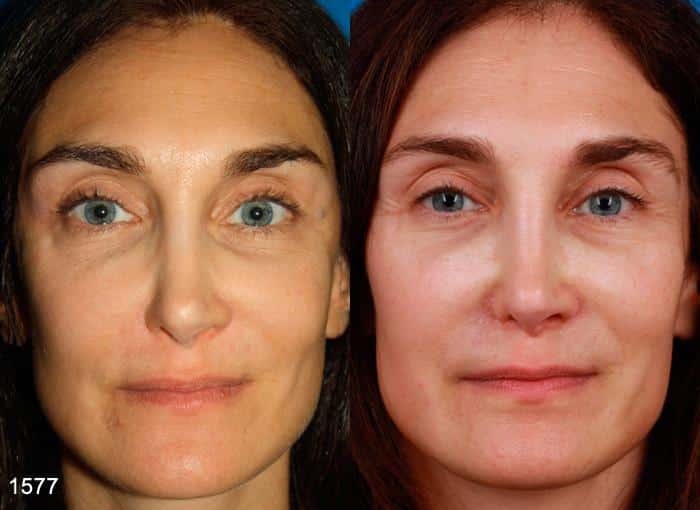
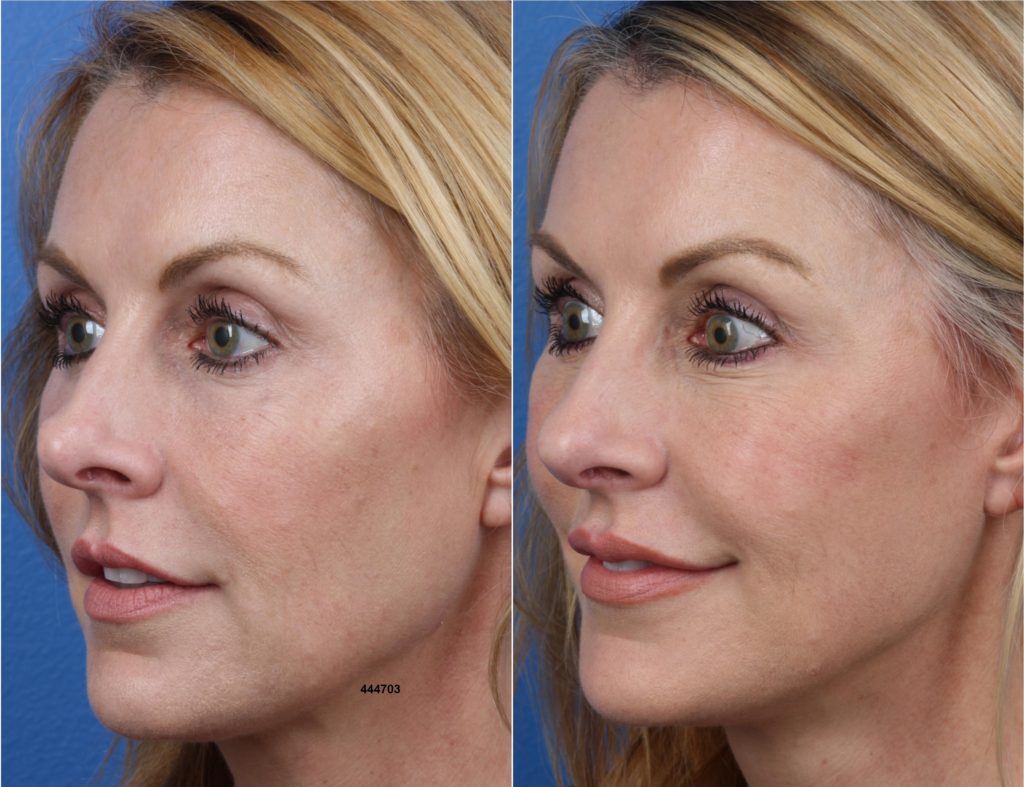
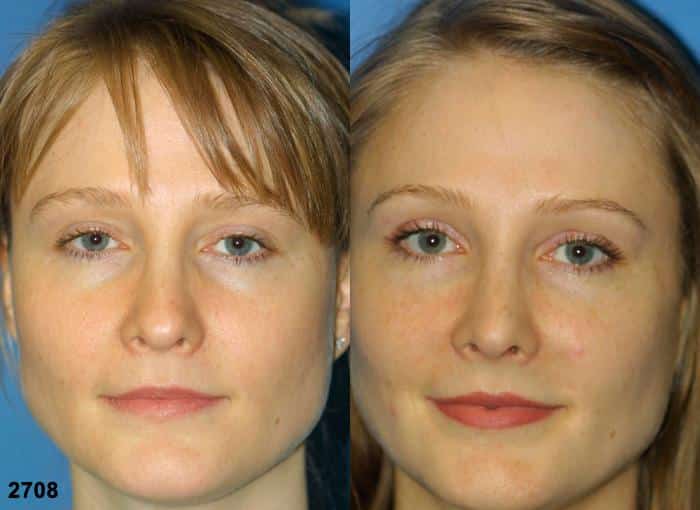
Short Nose
If too much cartilage is removed during the initial rhinoplasty, the appearance of a “short nose” may result. Through the use of specialized grafts and reinstating cartilage, a more natural-looking shape can be returned to the nose with a revision rhinoplasty.
Here’s an example of some of Dr. Miller’s work in this area:
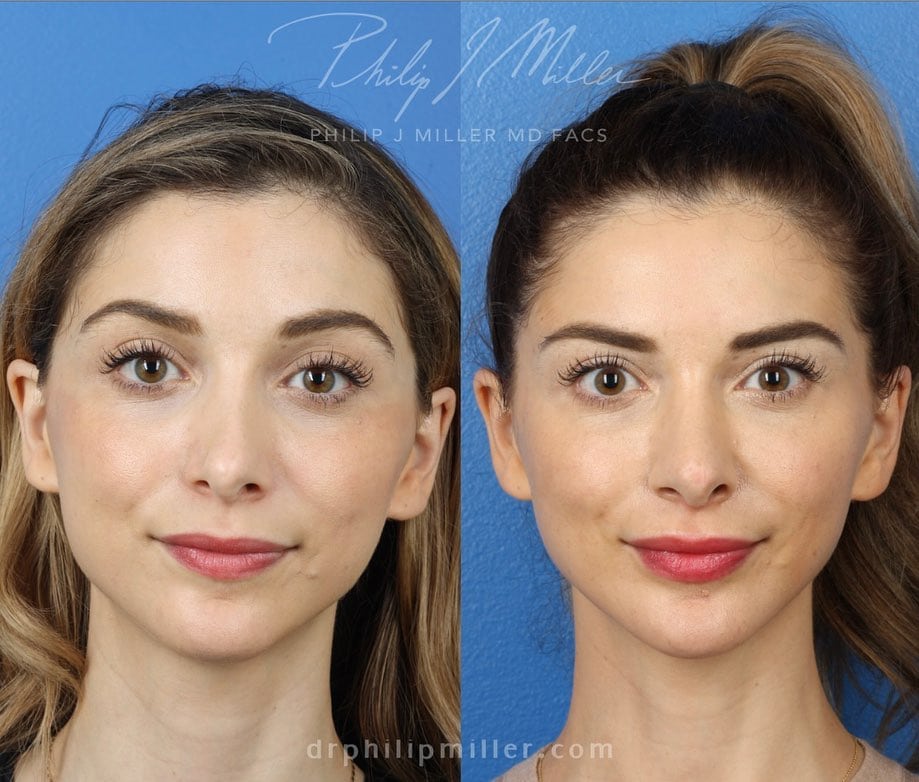
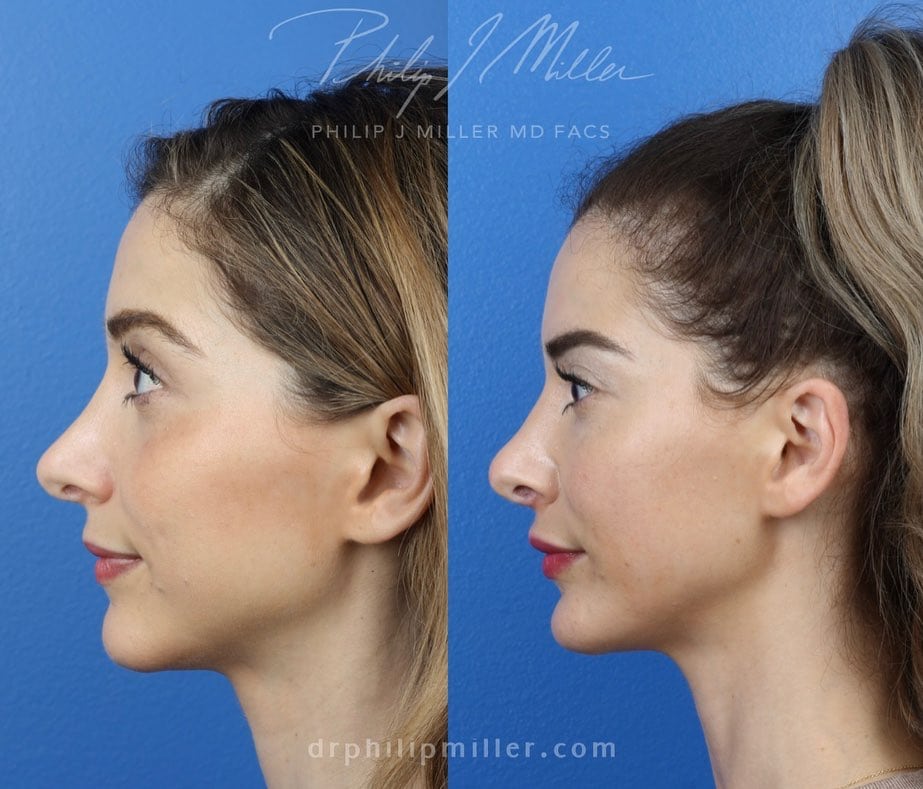
Crooked/Twisted Bridge
A “crooked” or “twisted” appearance can occur as a result of nasal trauma. This can be corrected by making the nose symmetrical again by rearranging the cartilage and the bone.
Here are some examples of Dr. Miller’s work that focus on symmetry:
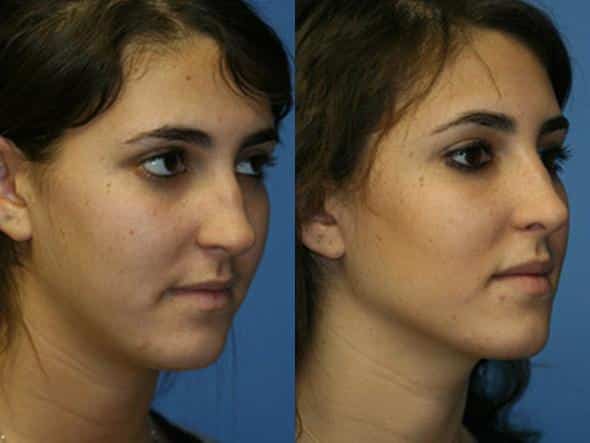
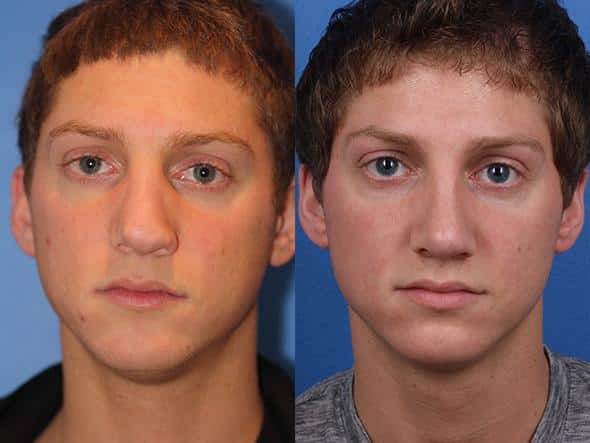
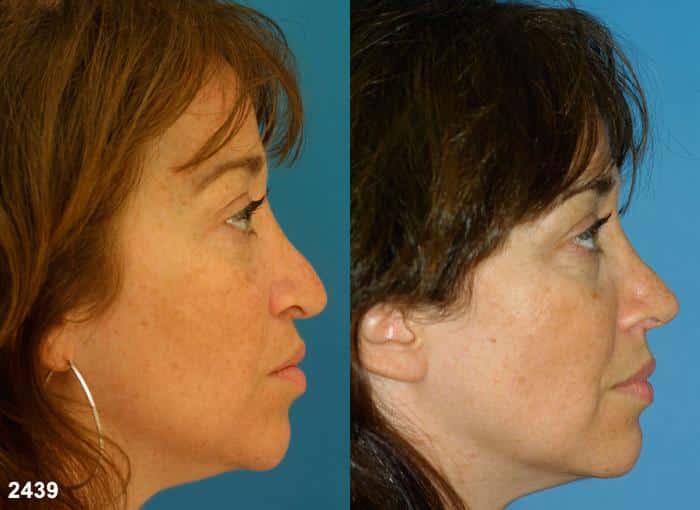
How to tell your plastic surgeon you are unhappy?
After going through the emotionally and physically exhaustive process of planning and completing your initial rhinoplasty, it can seem daunting to consider going through those steps again. After experiencing a bad nose surgery, you wouldn’t want to spend that time and money again for another rhinoplasty fail. However, the first logical step is to address your concerns with the surgeon who performed your initial surgery.
If your original surgeon cannot provide you with a satisfactory response to your issues, you may need to look for another surgeon to perform revision rhinoplasty for you. The most important factor here is the plastic surgeon you choose.
A board-certified facial plastic surgeon is often the best choice for a revision rhinoplasty procedure. These specialists have intimate knowledge of the nose, studying first as an ear, nose, and throat specialist. The addition of plastic surgery training ensures these surgeons have both the expertise and the artistry to enhance the appearance of the nose while preserving function.
How Can I Fix My Rhinoplasty?
Philip J. Miller, MD, FACS, is a board-certified facial plastic surgeon who specializes in procedures for the nose and face. He offers his proprietary NatraLook® Process, which is a patient-centric approach to understanding your needs, listening to your expectations, and going through every step with communication and trust. With a technique that combines artistry and science, Dr. Miller has performed over 5,000 successful surgeries.
You need a surgeon with proven abilities, who has achieved a high success rate in producing the most natural-looking and aesthetically-pleasing rhinoplasty results in Manhattan, New York, and New Orleans, Louisiana. Schedule your consultation with Dr. Miller today by calling 646-791-3025, or booking online.
Learn how rhinoplasty can make a nose appear smaller here.